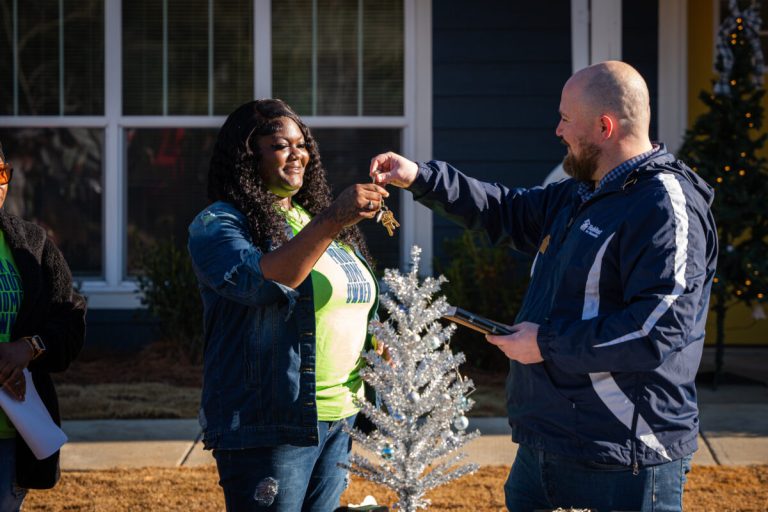Reviving the urban planning wisdom of Birmingham’s 1925 Olmsted plan with the Red Rock Trail System
Reading time: 9 minutes
Sponsored

In the 1920s, Birmingham employed the skills of a true urban planning visionary, Frederick Law Olmsted Jr. We see his mark today in places like Ward and Rushton Parks, but his full-fledged master plan? It fell through the cracks. Today, the Red Rock Trail System is bringing it back, one trail at a time.
The Olmsted Vision

Who was Olmsted? His father designed Central Park and was America’s first landscape architect. But the junior Olmsted was outstanding in his own right.
He drafted the credo of the National Park system and, through his work with state parks in California, created a national model for all state park systems.

For the young city of Birmingham, he envisioned a system of parks and greenways designed around our ridges and waterways, according to the Birmingham Historical Society.
Here’s what else:
- Give every citizen easy access to nature and outdoor recreation through neighborhood parks, no matter who they are or where they live.
- Create parks along our creeks, protecting watersheds and flood plains.
- Also create parkways along ridge lines with impressive public overlooks.
- Reserve vast tracts of land in Shades Valley (undeveloped at the time).
Sounds pretty terrific. Too bad it never happened.

The Deluge
“If we’d listened to Olmsted and the master plan, we would have had less flooding issues.”
Jane Reed Ross, project landscape architect of the Red Rock Greenway Master Plan
When watersheds are overdeveloped, the ground absorbs less water and runoff overwhelms our creek systems. Then come the floods.

In Birmingham during the 20th century, urban development of watersheds hit Valley Creek and Village Creek the hardest, said Ross, who works with the architecture and engineering firm of Goodwyn, Mills and Cawood.
That has caused flood problems in Bessemer and Ensley respectively, among other areas. From 1980 to 2007, the city of Birmingham even had to buy out Ensley homeowners living along Village Creek to address the issue.
A New Plan: The Red Rock Trail System

We can’t turn back the clock, but we can learn from our mistakes. Enter the Red Rock Trail System, a project led by the Freshwater Land Trust. For almost a decade, it’s been bringing a modernized vision of the Olmsted plan to life across Jefferson County. Here are the key facts:
- 750 miles! Since 2010, 120 miles of new and existing multi-use trails, parks, bike lanes and sidewalks have been incorporated into the Red Rock Trail System. That’s a good start toward the 750-mile goal.
- Designed around waterways, just like Olmsted’s 1925 plan: The Red Rock Trail System includes seven corridors: Jones Valley and Valley Creek, Village Creek, Five Mile Creek, Shades Creek, Cahaba River, Turkey Creek and Northern Beltway.
- Connecting people to nature—and their destination: All trails within each corridor of the Red Rock Trail System will eventually connect. That means viable pedestrian-friendly transportation and outdoor access for all Jefferson County residents, aligning with Olmsted’s plan very well indeed.

“Green space has been proven time and time again to be incredibly beneficial for both mental and physical health. It increases property values. It also allows people to connect with their natural environment.”
Carolyn Buck, Red Rock Trail System director, Freshwater Land Trust

Flood Plains, Railways and Mines (Oh My)
If Olmsted’s 1925 plan was about doing it right the first time, the Red Rock Trail System of today is all about second chances.
The framework is set. Now communities can work with the Freshwater Land Trust to acquire land and gradually connect the dots. Check out these success stories.

- The exhausted iron ore mines of Red Mountain: After mines closed in the 1960s, the land was plagued by trash dumping. In 2007, with the efforts of Freshwater Land Trust and community partners, U.S. Steel made one of the largest corporate land donations in U.S. history. Today, the 1,500-acre Red Mountain Park, with 15 miles of hiking and biking trails, is one of Jefferson County’s best assets.
- A flood ravaged mobile home park in Tarrant in 2002: Today it’s a city park. Plus, it inspired six municipalities—Brookside, Center Point, Gardendale, Graysville, Fultondale and Tarrant—to work together to restore the Five Mile Creek watershed. Goodbye, gross chemical sheen floating on the water’s surface. Hello, nature and recreation.
- Scores of homes located in a major flood plain in Ensley: Following the city buyout program, that land is on its way to becoming the Village Creek Greenway. Phase one was completed in 2018.
- A 14-foot-deep, out-of-commision rail trench called “1st Avenue Cut” slicing through downtown Birmingham: Guess what, that’s Rotary Trail. This beautifully landscaped path now almost connects Railroad Park to Sloss Furnaces. It’s a only a block from Jones Valley Trail, too.
- And, of course, Kiwanis Vulcan Trail at Vulcan Park and Museum.
Economics 101

“Places with trail systems and active lifestyles are places that people want to live, so it’s good for the economy. When you roll that into more green space, that helps the environment, too.”
Jane Reed Ross, project landscape architect of the Red Rock Greenway Master Plan
Case in point, the Birmingham architecture and interior design firm known as Fifth Dimension chose its downtown location for its proximity to Rotary Trail. President Dan Fritts, who is also a member of the Alabama chapter of the Urban Land Institute, recognized it as a key catalyst for city growth. He wanted his business to be right by it.

“Rotary Trail allows our staff to have great access to a healthier lifestyle by encouraging them to walk and bike to lunch, meetings and shopping. We even purchased office bicycles to facilitate in-town travel. Our clients enjoy coming in for a visit, and we often have walking meetings meandering down the trail to enjoy being outdoors.”
Dan Fritts, president, Fifth Dimension
Coming Soon!

Carolyn Buck of the Freshwater Land Trust shared with Bham Now what lies ahead for the Red Rock Trail System in 2019.
- High Ore Line Trail at Red Mountain Park: Opening this spring, this trail expansion connects the existing High Ore Line Trail to the western side of Red Mountain Park, where a new parking lot will serve as a trailhead. In a plan that’s all about connectivity, that’s major.
- Shades Creek Greenway expansion: Freshwater Land Trust and the city of Homewood worked together to secure the final easement for the expansion. “Hopefully we will see a groundbreaking sometime this year,” Buck said.
- A new trail for Gardendale: Opening as soon as this summer, it will be a continuation of the current Fultondale Rail-Trail that begins at the Children’s Park. “The beginning will be on Shady Grove Road and it will end near Shady Grove Road. Eventually we will open it to Jew Hallow Road once we can secure a few parking spots,” Buck said.
3 Ways to Get Involved

1. Get those boots on the ground.
Freshwater Land Trust started a program that allows community groups to adopt a mile or half-mile of a trail. Volunteers go out at least two hours every other month. Activities range from trash pickup to helping control invasive plants like kudzu and privet to sweeping away autumn leaves.

The very first community organization to adopt a trail was Dynamite Hill-Smithfield Community Land Trust, founded by Susan Diane Mitchell. Beyond cleanups, the group plans to establish walking tours featuring flowers, herbs and some fruit- and nut-bearing trees along Enon Ridge Trail.
“Not only can the Historic Smithfield Community members walk, jog and cycle for their health, they will also have opportunity to learn of plants that are native to Alabama.”
Dynamite Hill-Smithfield Community Land Trust

2. Support the Freshwater Land Trust … and use your outdoor voice.
You can support the trust through a donation, but your voice is powerful, too.
“Advocate with your elected officials. Let them know you want the city to be investing in the Red Rock Trail System. It’s a large upfront investment, so community support is critical.”
Carolyn Buck, Freshwater Land Trust
3. Consider joining the Urban Land Institute of Alabama.

The Olmsted plan fell through the cracks in 1925 for a reason. After one key member of the Birmingham park board, a visionary named M. P. Phillips, passed away, the torch may have been passed but the fire went out. Simply not enough people understood the long-term value of the plan, and shorter term goals won out.
The Urban Land Institute of Alabama is a network of forward-thinking real estate and land use experts. ULI members have been instrumental in Birmingham developments from Railroad Park to the Pepper Place Entertainment District to the Red Rock Trail System. It’s a whole army of influencers focused on the big picture!
“The Freshwater Land Trust works with a lot of individuals in the Urban Land Institute,” Buck said. “The people in that organization really understand and can be a catalyst for good development.”
Sponsored by:




